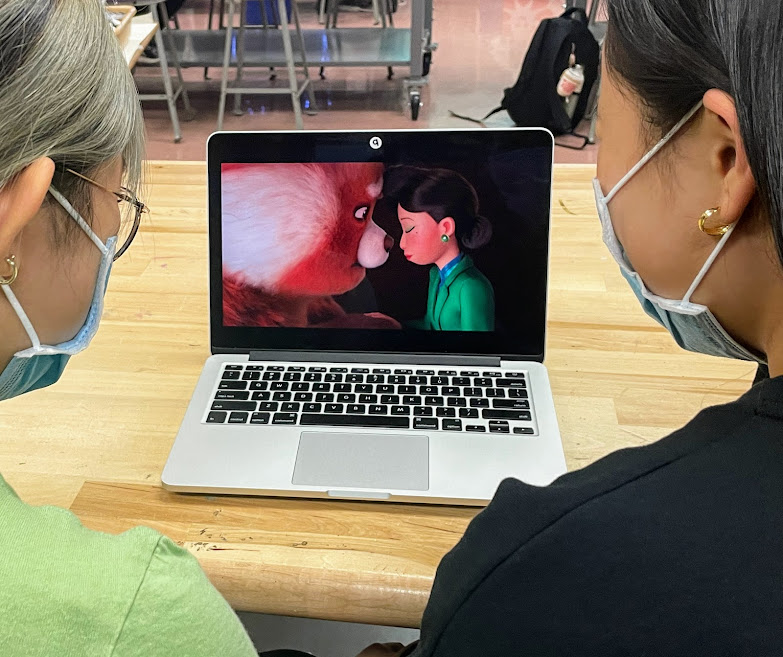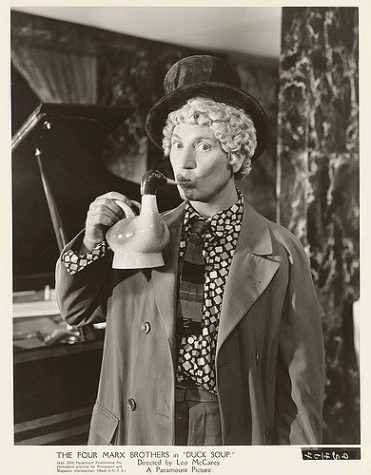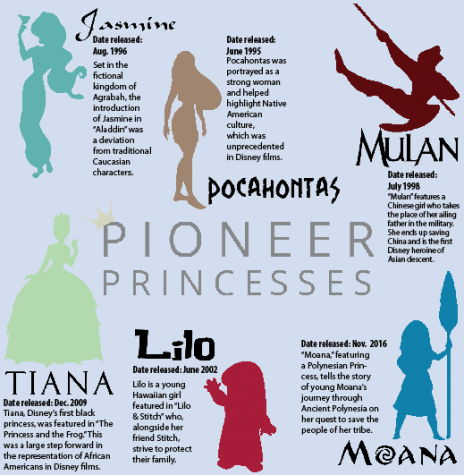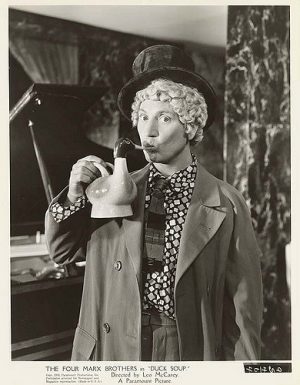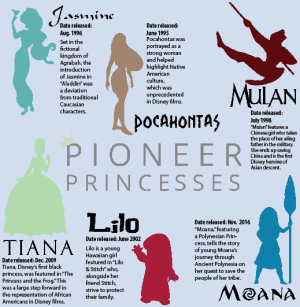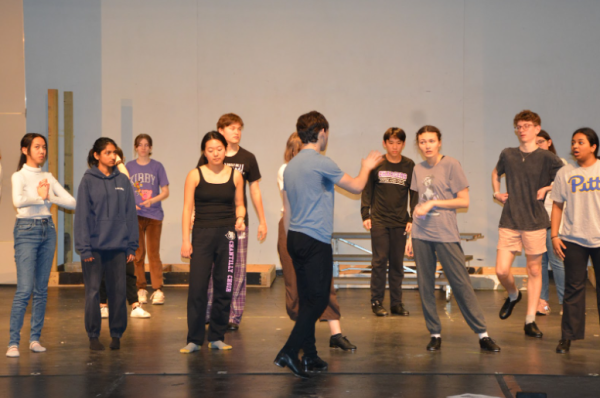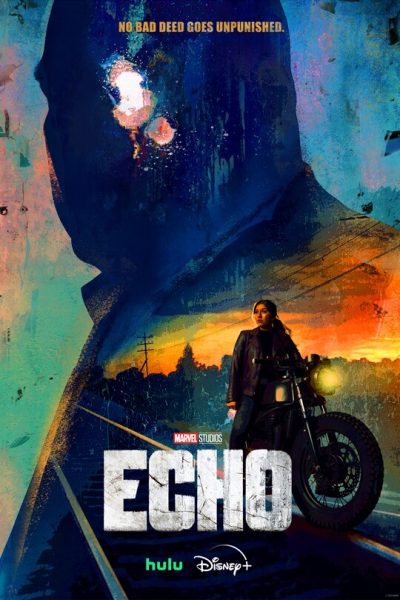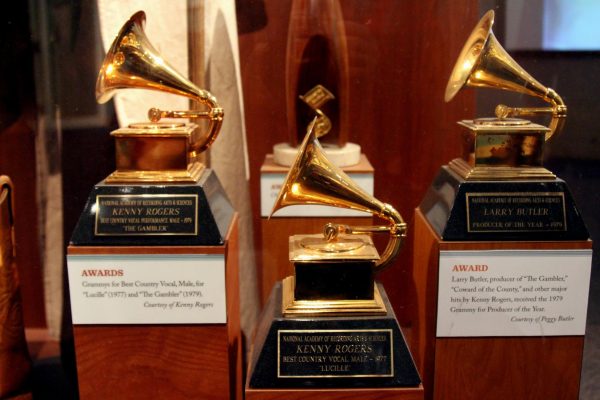‘Turning Red’ increases inclusivity in children’s films
Seniors Kayla Cha and Lucy Tien Pham watch “Turning Red” in the art room on March 23. Family is a large theme of the film, as shown when Mei Lee bonds with her mother while she is a red panda.
April 12, 2022
The now deleted controversial tweet made by managing director of CinemaBlend, Sean O’ Connell, was one of many criticisms of the Pixar movie “Turning Red” that sparked the conversation around appropriate representation in media for teens. Set in early 2000s Toronto, “Turning Red” highlights a Chinese-Canadian family and their culture, which O’ Connell argued is directed towards a supposedly limited audience—teenage girls and those of the Toronto-Asian community—and stated that it wore him out.
“Turning Red” was released on Disney+ on March 11 and follows 13-year-old Meilin Lee, a teenage girl and dutiful daughter whose mother runs an ancestral temple. After a particularly embarrassing day, Mei’s emotions get the best of her, and she transforms into a large red panda. Torn between her familial responsibilities, the excitement of being a teenager in Toronto and managing her panda problem, Mei struggles to figure out who she is.
“It was a more realistic movie compared to other Pixar films,” junior Anna Dimaiuta said. “It dealt with topics that are typically shielded away in other movies.”
“Turning Red” takes a different route than in other Disney movies, showcasing teenage crushes and sexuality, menstruation, puberty, fangirling over boy bands and the rebelliousness that comes with growing up. In an interview by ABC News, Domee Shi, the director of the movie, explains the red panda symbolizes the “big changes” one goes through in life and that “Turning Red” was what she wished she had seen in a movie when she was a child—an inspiration for kids to embrace and celebrate themselves.
“The journey of self discovery and finding out what you truly want is a good message,” junior Tara Tran said. “I appreciate that [‘Turning Red’] was a passion project for the director because it hits close to home and is still fun.”
Recent animated Disney movies that present more diverse stories, such as “Encanto,” “Soul” and “Onward,” have become new favorites for teens and adults alike, according to CinemaBlend. “Turning Red” follows this development, with a Chinese main character and Korean and South Asian side characters. There is a strong focus on Chinese heritage and culture and how they affect Mei Lee as she comes of age.
“It provides good representation for Asians and young girls,” Tran said. “I know some people who have issues with their parents similar to the main character of ‘Turning Red,’ and it’s good to have something out there showing younger people that it’s okay to deviate from what your parents say, even if it’s hard.”
But, according to Comic Book Resources, “Turning Red” showcased a greater problem with Disney movies. Two days before the movie’s release on Disney+, Pixar publicized how Disney cuts scenes displaying gay affection and typically prohibits Pixar from creating LGBTQ+ content. Many believe that Disney cut similar scenes in “Turning Red,” spotting queer-coded characters in the movie such as Tyler and Priya, per Pop Buzz.
“It’s a fair critique of Pixar to call [Disney] out on being hypocritical and superficial in what they support,” English teacher James Steck said.
[‘Turning Red’] is probably the most diverse Pixar film to date—racially, ethnically and culturally,
— English teacher James Steck
Nevertheless, according to CinemaBlend, “Turning Red” encapsulates the melting pot that is Toronto, with intricate backgrounds that ensure diversity. The trailer showcases a background character who uses an Insulin pump, and Lee’s ancestral temple includes ramps and some shots display characters in wheelchairs. The movie also used new screen by screen analysis technology to prevent inherent bias of employees, allowing animators to focus on background shots and incorporate inclusive details more effectively.
“[‘Turning Red’] is probably the most diverse Pixar film to date—racially, ethnically and culturally,” Steck said. “All movies and art are going to be personal in some sense, and I think it’s healthy for a young audience, and young girls specifically, to see themselves represented in a way that doesn’t show them shamefully. It was really well done and necessary.”


